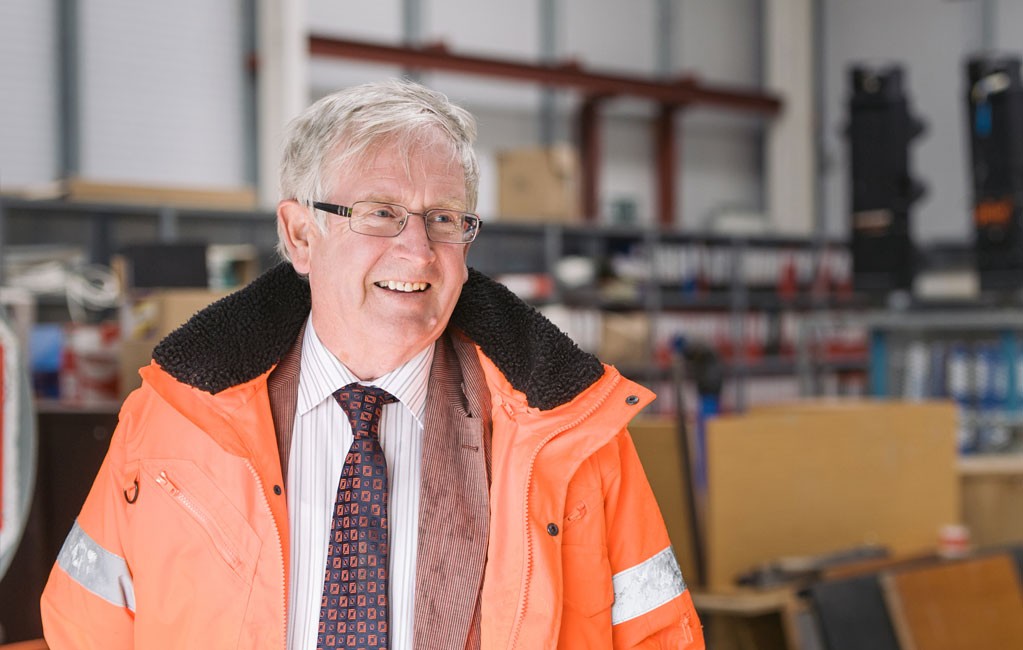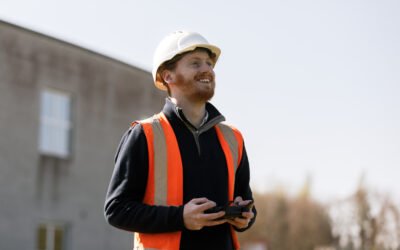The Covid-19 pandemic accelerated the focus on local communities, and resulted in the Our Rural Future plan, which further commits to regional urban regeneration to facilitate remote working and develop local communities. As a result, local authorities across the country have been progressing plans for public realm improvement with more and more space afforded to pedestrians, cyclists and the community at large. Construction magazine meets members of the Civil Engineering Contractors Association (CECA) to find out more.
John Cradock Ltd
There is no more perfect example of the work undertaken by CECA members in improving public spaces as with projects of urban renewal.
The results are often immediately felt by the public and the businesses that front theurban spaces in question. These projects literally place members in the heart of public consciousness.
As is made clear by John Cradock Ltd’s managing director and founder John Cradock. He describes how businesses can often have a sense of concern over disruption that public works and urban renewals may have.
“We have over 20 years’ experience delivering in the area of urban renewals,” he says. “One thing I can absolutely say is that you have to talk with the business owners to reassure them during the construction phase of a project.”
Victor Smyth, Contracts & Safety Director at John Cradock, agrees saying: “Communication is an absolutely essential element to ensure stakeholders feel heard during the construction process.”
John Cradock adds: “In most cases we are able to maintain a comfortable amount of foot traffic for shop fronts, so disruption really is minimal, but we do appreciate the very valid concerns that a shopkeeper might have.
“Invariably when we return after completion those businesses are delighted with the result.”
That marks the attitude that has contributed to the company’s success, a keen intuition for the concerns and needs of stakeholders of any urban renewal project.
There is no part of the country that John Cradock Ltd isn’t willing to work in as Victor Smyth says, the company has “projects across all of the regions, from Navan to Athlone, Tralee and your cities like Dundalk, Limerick, and Waterford”.
“Any job we do is for the public good. It’s a satisfying industry for the staff involved,” says John Cradock as he describes the sense of accomplishment and pride his team have upon completing a project.
“When they pass a project they worked on with their families they’ll say ‘I built that’, and it’s important to be a part of that.”
On a final word of consideration both stress how collaboration is vital to a successful project, with input from all stakeholders. “Whether that’s the public, councils or contractors every successful project comes through with collaboration,” Craddock adds.
Clonmel Enterprises Ltd
Clonmel Enterprises Ltd is a multidisciplinary civil engineering company that currently carries out projects of scale from €100,000 to €40million.
Many of the works are public realm projects and others include elements thereof. The company is currently working on a “significant public realm regeneration project for SDCC at their county offices in Belgard Square North” says Managing Director Eamonn Stapleton.
Another significant and unique project that he describes involved “the renewal of paving and landscaping in a space that was previously a 19th century graveyard” for Dublin City Council at Wolfe Tone Square.
The project was attended full-time by an archaeologist given the historical context of the site.
Their work is not limited to the confines of Dublin’s borders with similar work in Waterford city and a “particularly challenging” project in Galway city that maintained normal operating hours for businesses and high levels of pedestrian traffic.
Traditional building methods remain the majority of works carried out in urban renewals, which is true of most civil engineering work.
This doesn’t mean there isn’t constant innovation in the sector as Stapleton says: “The quality and standard of machines used are always improving with one of the biggest changes being the availability of GPS controlled excavators.”
What seems like an interesting contrary approach in civil engineering, he notes that many designs, “involve the surface treatment of in situ poured concrete to give a detailed quality finish” – a development that seems “a reversal of what is being promoted as off-site construction”.
By their nature public realm regeneration projects are constructed in environments with multiple constraints. They are public spaces and in most cases the contract requires minimum disruption to the public and for sections of the public realm to remain open at all times.
“This demands very close, regular, transparent communication to reach agreement to achieve everybody’s aims,” Stapleton says.
The next challenge is that invariably in these environments there are multiple utilities underground, which will clash with proposed permanent works and methods of construction.
New utility installation has to integrate with the existing systems, which all require agreements and good working relations with the multiple providers involved.
“The final challenge of public space projects is that they by their nature they will have high quality finishes,” he adds. In an open environment completing quality finishes is a challenge.
To achieve this in multiple phases over periods of different weather conditions increases the challenge significantly. “It is only by understanding all parties’ needs, that agreements can be reached, and progress can be achieved.”








